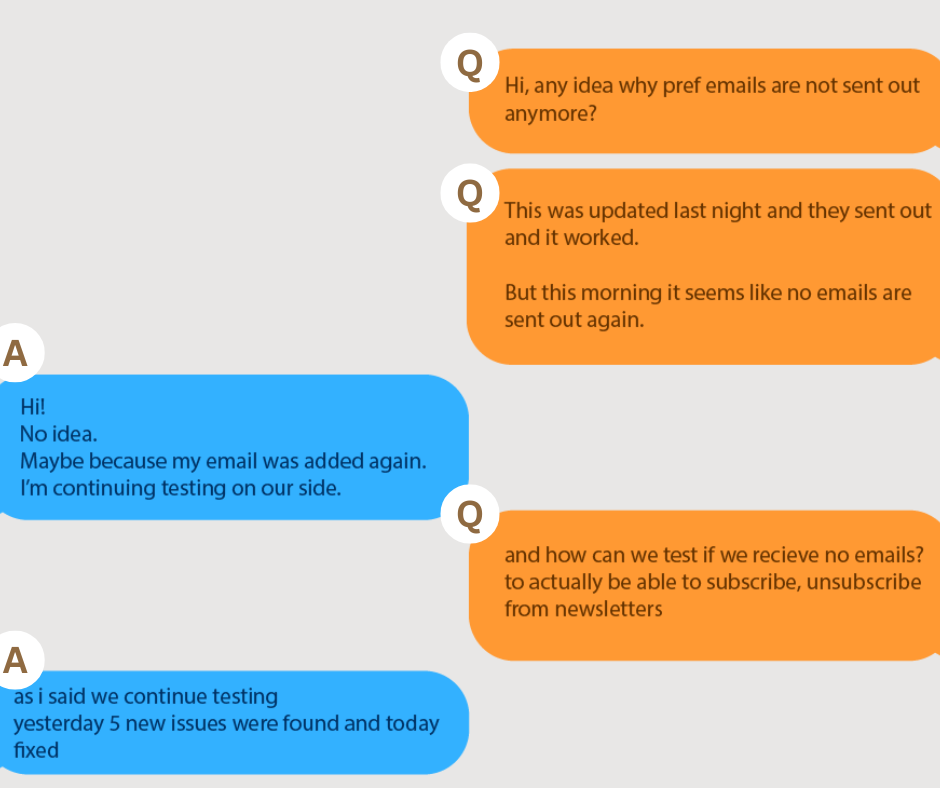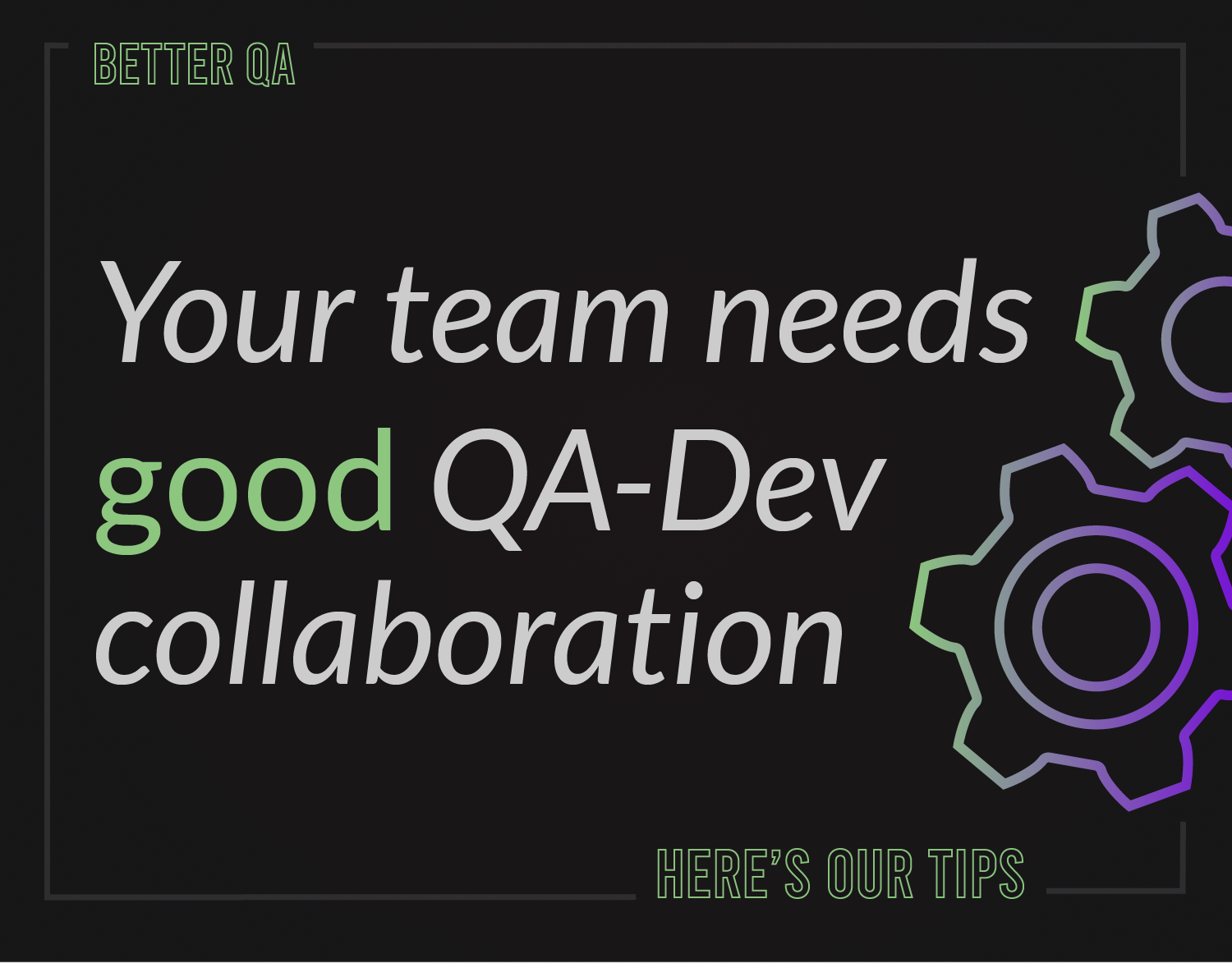Introduction
As a software tester, your main focus should be reporting issues and prioritizing customer satisfaction. However, doing it successfully depends on many factors outside of your control. The interactions between dev-QAs can become challenging if there is a lack of cooperation.
Your Dev-QA teams need cooperation. How to foster it?
Most of the time, the testing process is directly impacted by the development team’s workflow. When two teams with different end goals cooperate, many misunderstandings can pop up: developers write the code to address functions based on the initial requirements. In contrast, the QA team is responsible for improving the product’s overall quality. While each team is independent, the workflow depends on everyone’s responsibilities and collaboration.
Fostering cooperation is primarily the job of the management team. Transparency and communication should be the immediate tools at hand. Otherwise, developers and testers will end up blaming each other.
Main signs of a healthy work environment
If you want to figure out if your work environment is helping or limiting you, here are some boxes that should be checked:
1. Each team understands and respects each other's roles and responsibilities.
Once a feature or story is assigned to you for testing, you might not be able to start immediately. The development team needs to set time aside for the QAs to act, while testers must understand that developers will meet some of the reported issues with limitations.
2. Collaboration is done through flexible communication tools.
You should be able to directly contact anyone in the team responsible for the software you’re interacting with. You’ve probably already heard about Slack, but other tools, such as Trello, can come in handy when it comes to organizing teams. Make sure you’re taking your time to constantly update the status of your story and add any additional information that might affect others.
3. Upper management makes sure that every team member gets visibility.
Everyone should share feedback effectively and exchange ideas on equal ground. While conflict could still happen, managers can simplify these processes by creating an environment where testers ask for clarification on any issue that affects their productivity and efficiency. This is important because not bringing attention to issues at the right time will slow down the process, and the blame might fall on the team waiting for the green flag to proceed. Delays and blockers are best discussed in meetings!
4. Client goals are a priority!
The main focus should be on the customer’s point of view and expectations in any situation. Managers can facilitate this by including stakeholders in the conversation from the beginning. Ideally, any issues that interfere with your testing should be addressed between the development team and the QAs, but there’s no one-size-fits-all solution to misunderstandings. Keeping things updated with the Product Manager/Product Owner is essential. This way, they can take the role of the mediator in case things are not going according to plan.
What to do as a QA if you face too many blockers?
Our work environment fosters cooperation between Dev-QAs, so things run smoothly. And if they don’t, we resolve any issues professionally. Below you can see an example of a situation involving upper management.
Both of the project’s PMs pushed for testing to be done on a couple of stories. Still, the QA team couldn’t go any further because of blockers: the development team was not finished with their internal testing of the feature, even though it was assigned and updated as Ready for Testing. Initially, we tried communicating the issue directly to the development team, but since the response was not satisfactory, we clarified things with the PM.
Conversation with the lead dev of this feature:

After sharing the conversation with the upper management, here’s the answer we got:

Stay Updated with the Latest in QA
The world of software testing and quality assurance is ever-evolving. To stay abreast of the latest methodologies, tools, and best practices, bookmark our blog. We’re committed to providing in-depth insights, expert opinions, and trend analysis that can help you refine your software quality processes.
Delve deeper into a range of specialized services we offer, tailored to meet the diverse needs of modern businesses. As well, hear what our clients have to say about us on Clutch!
